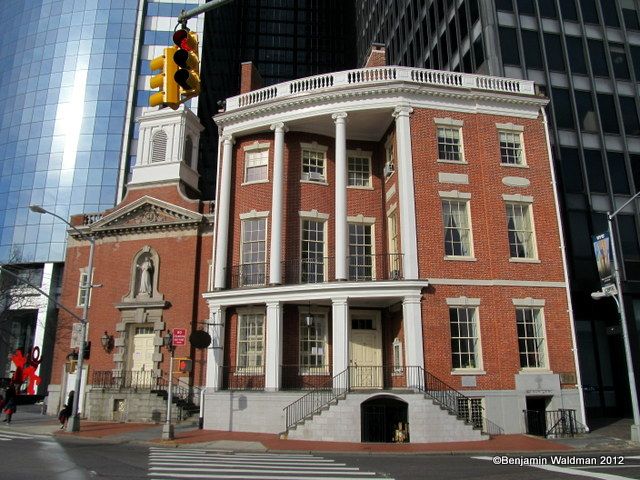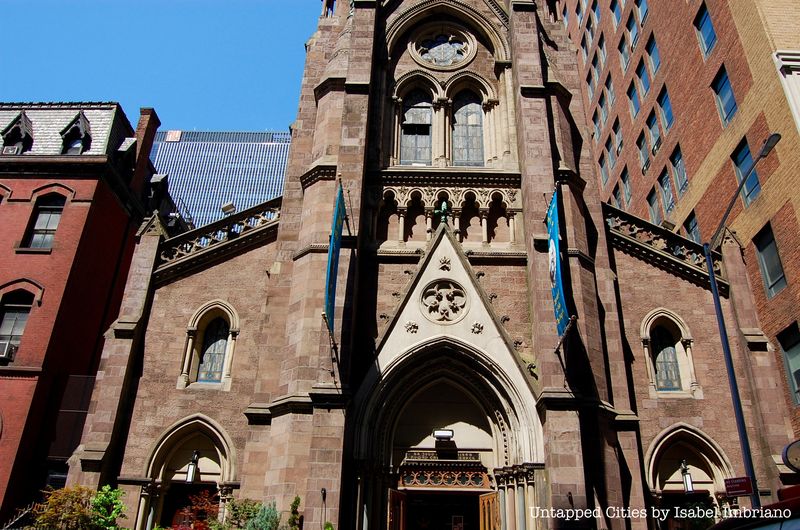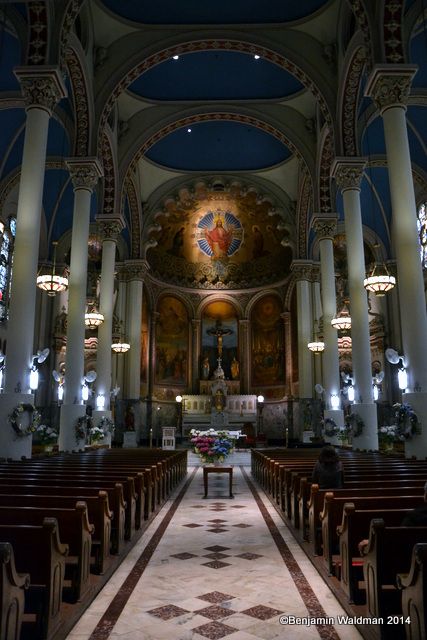Last-Minute NYC Holiday Gift Guide 🎁
We’ve created a holiday gift guide with presents for the intrepid New Yorker that should arrive just in time—


There has been a lot of buzz about the Pope’s possible visit to the United States in 2015 with a potential stop in New York City. While New York City is more well-known for St. Patrick’s and St. John the Divine cathedrals, there is a unique subset of religious sites that are quite off the beaten path. When exploring New York City’s churches, they begin to reveal secrets that are more reminiscent of their European counterparts. Presented below are five sites intimately connected with saints, whether through life or death.

The Shrine of Saint Elizabeth Ann Seton
Elizabeth Ann Bayley Seton was born on August 28, 1774, in New York City, and would go on to become the first native born United States citizen to be canonized by the Roman Catholic Church. Seton opened a school in New York City, which was short-lived due to the pervasive Anti-Catholic sentiment in the City at that time. As a result, Seton moved to Emmitsburg, Maryland, where she opened a school and the first convent in the United States.
She died on January 4, 1821 and was buried in Emmitsburg. Seton was beatified in 1963 by Pope John XXIII and became the first native born American saint when she was canonized by Pope Paul VI on September 14, 1975. Though her remains are now located in Emmitsburg at the National Shrine of St. Elizabeth Ann Seton, a minor Basilica, Saint Seton still maintains her connection to New York City.
Located at 6 and 7 State Street, abutting Battery Park, is The Church of Our Lady of the Holy Rosary and The Shrine of Saint Elizabeth Ann Seton. The Church’s rectory occupies the James Watson House which was built in 1793 and is attributed to John McComb, Jr. who designed New York City Hall. The colonnaded addition was added in 1806, who columns according to legend, came from the masts of cargo ships owned by Watson.
Though named after Seton, and founded to engage in the same work as Seton (serving wayward Irish Girls), Seton did not actually live on the site, as too many sources erroneously state. In fact, from 1801 to 1803, Seton lived in the building that occupied the adjoining lot, 8 State Street. Sadly, her house was demolished in 1963.

The Church of St. John the Baptist is a nineteenth-century Gothic Church designed by Napoleon Le Brun near Penn Station. The church contains the Saint Padre Pio Relic Shrine. Saint Pio (Pius) of Pietrelcina was an Italian priest who lived from 1887 to 1968. He was cannoniozed by Pope John Paul II in 2002. After becoming a Saint, Pio’s body was put on display in San Giovanni Rotondo, in Italy.
New York City posseses some unique relics for this saint. The Padre Pio Relic Shrine at the Church of St. John the Baptist contains his brown fingerless woolen glove and white linen sock, stained with his blood. On special occasions, the church also displays Pio’s crystal cruets, his fountain pen, a photo of the Saint with him writing with the same pen, a cloth used to absorb the blood from his stigmata, which still bears the stain, a scab of the stigmata, and some of his hair.

Saint Frances Xavier (Mother) Cabrini was born in Sant’Angelo Lodigiano (now Italy) in 1850. On the advice of Pope Leo XIII that her future lay “Not to the East, but to the West,” Mother Cabrini emigrated to the United States. She was responsible for the opening of an Italian orphanage in Manhattan, a free school on the Lower East Side, an orphanage in West Park, New York, as well as 66 other orphanages and schools across the country. Mother Cabrini also established hospitals in New York City (Columbus Hospital and Italian Hospital which merged into Cabrini Hospital), Chicago, and even Seattle. Mother Cabrini died in Chicago on December 22, 1917, ten years after fulfilling her dream of becoming an American citizen. She was interred at her orphanage in West Park, New York.
It did not take long for Mother Cabrini to achieve sainthood. She was beatified on November 13, 1938, by Pope Pius XI, and canonized on July 7, 1946, by Pope Pius XII. Cabrini’s body was exhumed during the canonization process and was relocated to the St. Frances Cabrini Shrine in Northern Manhattan. The head of Mother Cabrini, who is the patron saint of immigrants, was brought to her congregation’s international motherhouse in Rome.

Today, you can visit the De Sina & Pellegrino designed St. Frances Cabrini Shrine, which is located at 701 Fort Washington Avenue, (just off of Cabrini Boulevard, which was named in her honor) and view the body of the first American citizen to be canonized by the Roman Catholic Church.

The Baroque Church of the Most Holy Redeemer is located on East 3rd Street. The nineteenth-century church contains the remains of St. Datian, about whom almost nothing is known. According to Atlas Obscura, the reliquary chapel also contains the relics of Jesus’ manger, the pillar at which he was scourged, the true cross, the girdle of the Virgin Mary, the mantle of St. Joseph, and other relics of St. Ann, St. Lazarus, St. John the Baptist, and St. Anthony of Padua.These relics were allegedly sent to the church in 1892 when a wealthy Italian woman could no longer afford to keep them in her private chapel. According to legend, the bones might actually belong to a policeman who was shot defending the church from burglars and not the saint himself.
The Greek Orthodox Shrine Church of St. Nicholas was founded in 1955 by a small group of Greek Orthodox Christian families in Flushing. When it opened, it became the 348th Greek Orthodox Church in the Western Hemisphere. In 1972, Archbishop Iakovos received relics of Saint Nicholas from the Roman Catholic Church in Bari, Italy the relics of St. Nicholas where the Saint’s primary relics have resided since 1087. The relics were enshrined at a special Vespers Service during which the church received its current name, The Greek Orthodox Shrine Church of St. Nicholas, from the Archbishop.
Subscribe to our newsletter